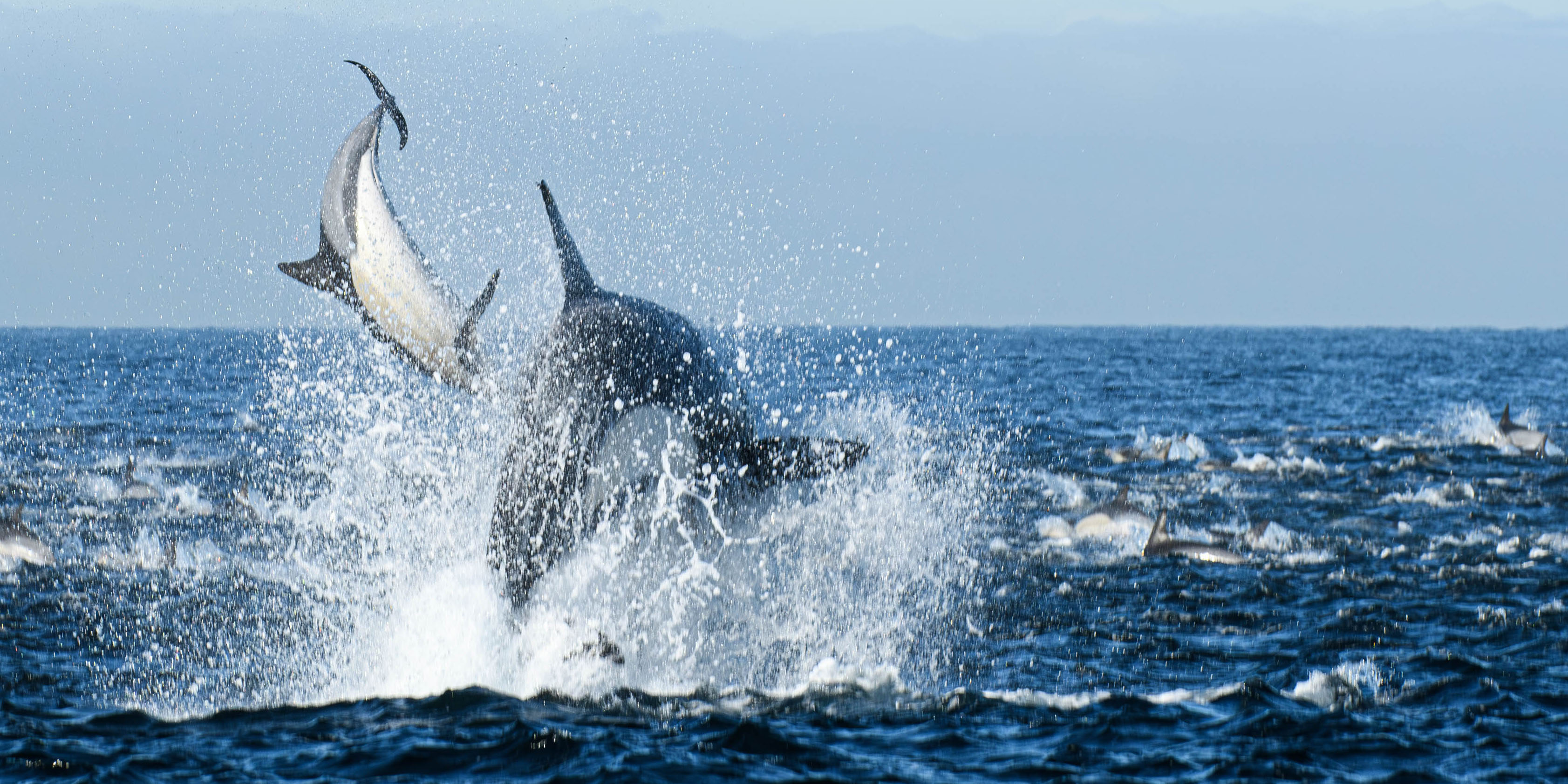Images of these highly energetic and skilful hunters filled the media on each visit and they enjoyed celebrity status for many years. That was until they were knocked off their perch by the infamous shark killers, Port and Starboard.
But on Sunday, after an eight-year hiatus, they were back. Not the same pod from back then, but the male among them is an animal I’ve seen a few times before.
https://www.youtube.com/watch?v=yHpNNtS21OY
The report came in at around 8am from Peter Morgan, one of our seasoned land-based spotters in Simon’s Town (no cetacean escapes his powerful binoculars) and we sprang into action.
Peter reported that several predatory events had taken place before we found the killer whales an hour later. At that time, they were milling around off Simon’s Town and the dolphins were reported close to Fish Hoek and heading towards Kalk Bay.
 (Photo: Dave Hurwitz)
(Photo: Dave Hurwitz)
 (Photo: Dave Hurwitz)
(Photo: Dave Hurwitz)
 (Photo: Alexander Vogel)
(Photo: Alexander Vogel)
 (Photo: Dave Hurwitz)
(Photo: Dave Hurwitz)
The killer whales were certainly not bothered by us and happily swam up to the boat and enjoyed a spell of riding our wake. We then noticed the 300-strong pod of dolphins in the distance, heading straight towards us and the killer whales.
Orcas are silent when in hunting mode, so obviously hadn’t been detected by the dolphins.
 (Photo: Alexander Vogel)
(Photo: Alexander Vogel)
 (Photo: Alexander Vogel)
(Photo: Alexander Vogel)
When they did meet up, I expected pandemonium as has broken out in all the previous events that I’ve witnessed, but this time it played out in slow motion, with a total absence of a typical common dolphin flight response.
In fact, the dolphins barely accelerated beyond eight knots (15km/h), when they are quite capable of reaching 30 knots (56km/h) and therefore in order for the killer whales to catch them, they’d have to accelerate beyond that speed.
 (Photo: Alexander Vogel)
(Photo: Alexander Vogel)
 (Photo: Alexander Vogel)
(Photo: Alexander Vogel)
Having given some thought to this, I would hypothesise that the killer whales had been shadowing and feeding on this pod of dolphins for a long time, possibly a number of days, and maybe even corralled them into False Bay. It was as if the dolphins had accepted the inevitable and were relying purely on their numbers for their individual survival.
But despite the apparent sluggishness of both predator and prey, a most dramatic attack took place and a dolphin was sent flying (Alex Vogel got the money shot). The initial strike, as is usual with killer whales, was by one of the females, but soon thereafter, she handed the partially immobilised dolphin to the male, who simply shepherded it around for about 10 minutes until another female arrived on the scene and dispatched it.
We enjoyed another hour interacting with the killer whales before they regrouped and headed towards Cape Hangklip. DM
Dave Hurwitz, an avid naturalist, started Simonstown Boat Company over 20 years ago and has become an expert on cetacean behaviour in False Bay. He has consulted on and featured in documentaries produced by Discovery Channel, National Geographic and many others, both locally and internationally. Dave regularly updates his Facebook page with sightings https://www.facebook.com/boatcompany.
Alex Vogel is an airline pilot, naturalist and developer of the Seafari app. Seafari allows users to record a marine mammal sighting as well as to view sightings recorded by other users. Vogel is also an administrator of the Cape Peninsula Whale & Dolphin Sightings Telegram group. Click here to join the group https://t.me/+g9a8HLwm7Y0wMDQ0.
https://www.youtube.com/watch?v=REeWvTRUpMk




 (Photo: Alexander Vogel)
(Photo: Alexander Vogel) 